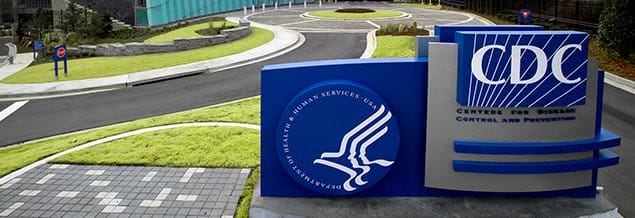The following is an excerpt from Reuters.
The U.S. Centers for Disease Control and Prevention, facing a Freedom of Information Act lawsuit seeking a vast trove of data about the safety and side-effects of the Covid-19 vaccines, made a pledge in August.
The agency in court papers said that on or before Sept. 30, it would post on its website a “public use” set of data from about 10 million people who signed up for its “v-safe” program — a smartphone-based system that periodically sends people text messages and web surveys to monitor potential side effects from the Pfizer, Moderna and Johnson & Johnson Covid-19 vaccines.
But the CDC missed its deadline. A spokesperson cited a delay in “the technical and administrative processes” necessary to post on the agency’s website, but said it hopes to have the information up by late November or early December.
In the meantime, the CDC handed over the v-safe data (minus personal identifying information) to the plaintiff in the FOIA case, the Informed Consent Action Network, or ICAN, a Texas-based nonprofit that says it opposes “medical coercion” in favor of individual healthcare choices.
ICAN crunched the numbers on its own and came up with some statistics that its lawyer says appear to be “alarming.”
According to ICAN, 7.7% of the v-safe users — 782,913 people — reported seeking medical attention via a tele-health appointment, urgent care clinic, emergency room intervention or hospitalization following a Covid-19 vaccine.
About 25% of v-safe users said they experienced symptoms that required them to miss school or work or prevented them from doing other normal activities, according to ICAN’s “dashboard” that summarizes the results.
There’s no way, however, based on the information collected, to determine whether the Covid-19 vaccines actually caused the ailments.
ICAN’s analysis included responses reported beyond the first seven days post-vaccine and it counted all reports of people seeking medical attention up to a year after receiving the shot. ICAN did not specify when after vaccination they received the care, nor did the data indicate what the care was for.
I asked a CDC spokesperson what the agency made of ICAN’s calculations. Are the numbers accurate?
The CDC “cannot comment on analyses conducted outside of the agency that we have not seen,” the spokesperson said via email, but added that v-safe data “have shown low rates of medical care after vaccination, particularly hospitalization.”
In the first week after getting the shot, the spokesperson continued, “reports of seeking any medical care (including telehealth appointments) range from 1-3% (depending on vaccine, age group and dose).”
She pointed me to a report looking at the first six months of v-safe data to back up the assertion. In addition, another CDC spokesperson said that agency personnel made follow-up calls to any v-safe users who reported seeking medical attention.
But ICAN counsel Aaron Siri of Siri & Glimstad, who led the FOIA litigation against the agency, said that because some vaccine-related adverse effects (chronic arthritis, thrombocytopenia, Guillain-Barré syndrome, myocarditis and more) can appear weeks after vaccination, it’s important to broaden the time frame beyond the one-week window in research the CDC cited.
Continue reading here.




Sharyl and Full Measure Team,
Let’s not forget Alexandra’s
below article, found here
( from Nov. 17, 2021 ) :
https://forbiddenknowledgetv.net/dr-david-martin-who-they-are-the-names-and-faces-of-the-people-who-are-killing-humanity/
####################
THE COVID ORCHESTRA
“But this, Ladies and Gentlemen is the slide you wanted to see. This is actually the names and faces of the people who are, in fact killing humanity. And that’s ALL of them. Now, here’s the bad news: There’s a lot of people on that slide, aren’t there? Here’s the better news…I’ll actually give you all this slide, because why not? Lets make sure that we don’t ever forget the names and the faces of the people who decided to kill us…”
Here is a list of all the people in that slide:
Mukesh D. Ambani, Chairman, Reliance Industries
Peter Brabeck-Letmathe, Vice-Chairman of the Board of Trustees WEF
Mark Carney, UN Special Envoy for Climate Action
Chrystia Freeland, Deputy Prime Minister and Minister of Finance, Canada
Kristalina Georgieva, Managing Director of the IMF
Queen Rania of Jordan
David M. Rubenstein, Co-Founder and Executive Chairman, Carlyle Group
Klaus Schwab, Founder and Executive Chairman, WEF
Marc Benioff, Chair and Chief Executive Officer, Salesforce
Thomas Buberl, CEO, AXA
Laurence Fink, Chairman & CEO, BlackRock
Orit Gadiesh, Chairman, Bain & Company
Fabiola Gianotti, Director General, CERN
L. Rafael Reif, President of MIT
Mark Schneider, CEO, Nestlé
Tharman Shanmugaratnam, Defense Minister, Singapore
Robert Mercer, Renaissance Fund
Larry Page, Google
Al Gore, Environmentalist
Angel Gurría, Secretary General OECD
Paula Ingabire, Minister of Information Communication Technology, Rwanda
Yo-Yo Ma, Cellist
Luis Alberto Moreno, WEF
Jim Hagemann Snabe, Chairman of Siemens and of Maersk
Feike Sijbesma, Philco
Zhu Min, Deputy Managing Director, IMF
Mark Zuckerberg, Facebook/Meta
Bill Gates, Microsoft
Herman Gref, CEO, Sberbank
André Hoffmann, Vice-Chairman Hoffman-La Roche
Christine Lagarde, President, European Central Bank
Peter Maurer, President, Red Cross
Patrice Motsepe, Chairman, African Rainbow Minerals
Julie Sweet, CEO, Accenture
Heizo Takenaka, Economist
Dustin Moskovitz, Open Philanthropy
######################
-Rick
Thanks for the list.